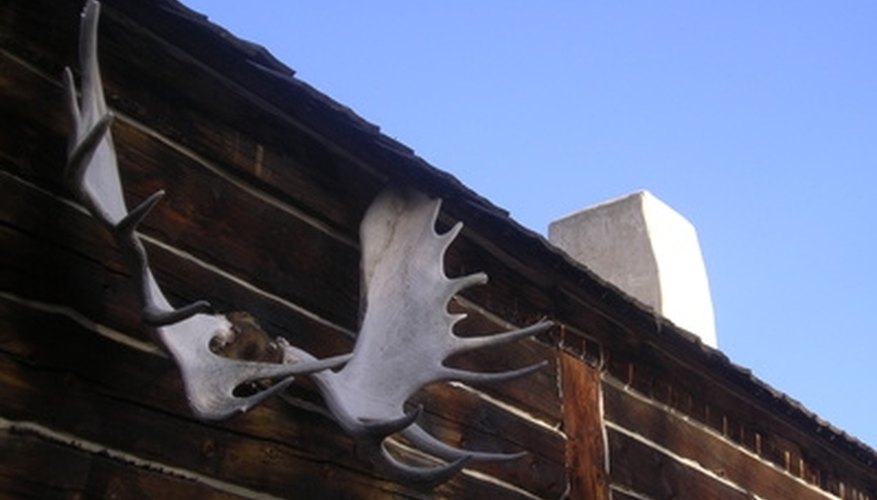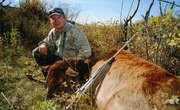
Removing the antlers from a moose head is the same in principle as removing antlers from a deer skull, but on a larger scale. Removing moose antlers isn’t hard, but it may take a little elbow grease and a strong stomach to saw through brain tissue. In many cases, hunters have to pack a moose on their backs, so cutting off the antlers in the woods can reduce the animal's weight.
Items you will need
Hacksaw or reciprocating saw
Extra saw blades
Hunting knife
Position the moose head with the jaw on the ground and the antlers pointing up. Set the saw blade horizontally just over the moose’s eye sockets and cut toward the back of the skull. Use a hacksaw if you are in the forest, or a reciprocating saw if you easily can transport the moose head to a location with an electrical outlet. Cut to a point about 3 inches beyond the rear of the antler bases.
Make a vertical cut by placing the saw 3 inches behind the antler bases. Make sure there is clearance between the saw and antlers. If not, move the saw farther back. Avoid rubbing the saw on the antlers as you cut because this will scratch them. Cut down perpendicular to the first cut until the cuts meet.
Check for connectivity after the cuts meet. You may have to make additional cuts to get the skull to break completely.
Cut free any connecting hide with a knife.
Twist the antlers until the skull plate breaks free of the rest of the skull. Continue sawing any skull pieces that are in the way and cutting any hide that is in the way.
Pull the skull plate free of the head. Dig out the brain matter from the inside of the skull plate with a knife.
Warnings
- Do not cut off the antlers in this manner if you plan to have a taxidermist create a moose shoulder mount, because this will ruin the hide. Either cape the moose, if you know how, or carry out the whole head. Caping is the process of skinning out the hide on the moose’s head and shoulders for a shoulder mount. Because it requires fine cuts, especially around the eyes, nose and mouth, caping is best left to a taxidermist.
Tips
- Carry extra hacksaw blades with you into the forest because they break easily. Without a spare, you’ll be forced to carry the entire head.
References
- Joe Shead; moose hunter; Superior, Wisconsin
Tips
- Carry extra hacksaw blades with you into the forest because they break easily. Without a spare, you’ll be forced to carry the entire head.
Warnings
- Do not cut off the antlers in this manner if you plan to have a taxidermist create a moose shoulder mount, because this will ruin the hide. Either cape the moose, if you know how, or carry out the whole head. Caping is the process of skinning out the hide on the moose’s head and shoulders for a shoulder mount. Because it requires fine cuts, especially around the eyes, nose and mouth, caping is best left to a taxidermist.
Writer Bio
Joe Shead is a freelance writer specializing in outdoor writing. He has written for numerous national and regional outdoor magazines on various topics from hunting to fishing to his pet subject, shed antler hunting.



